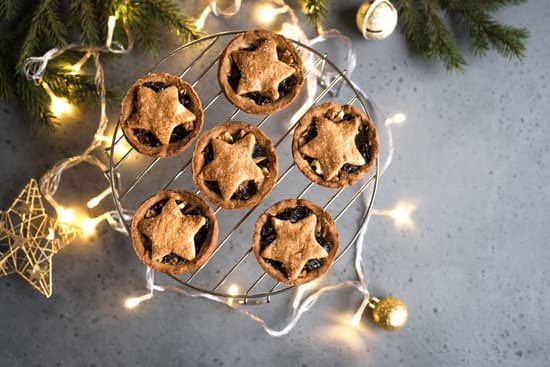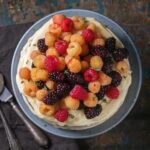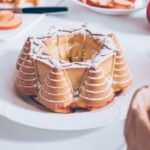Cake decorating is a delightful art form that allows individuals to let their creativity shine while celebrating special occasions. Whether it’s a birthday, wedding, or holiday gathering, a beautifully decorated cake serves as the centerpiece of the celebration, delighting both the eyes and taste buds of those lucky enough to indulge.
This article aims to guide aspiring bakers on their journey to becoming skilled cake decorators, providing valuable insights into essential tools and ingredients, step-by-step instructions for preparation and decoration, tips for troubleshooting common challenges, and inspiration for design ideas. So grab your piping bags and spatulas, because it’s time to dive into the wonderful world of cake decoration.
In today’s fast-paced digital age, many people seek creative outlets that allow them to express themselves artistically. Cake decorating has become increasingly popular as a way for individuals to unleash their imagination and create stunning edible masterpieces. The joy that comes from applying delicate swirls of frosting or meticulously placing tiny edible decorations onto a cake is unparalleled. A beautifully decorated cake not only showcases one’s artistic talents but also brings happiness and excitement to any occasion.
The satisfaction of making something beautiful with one’s own hands is part of what makes cake decorating so enjoyable. Each stroke of a piping bag or smooth swipe of an offset spatula brings the vision in one’s mind closer to reality. The result?
A show-stopping centerpiece that can captivate guests before they even take their first bite. From choosing the perfect color scheme to adding intricate details with fondant work or sugar flowers, every step in the process is an opportunity to express oneself creatively and create lasting memories.
As you embark on your journey into the world of cake decoration, this article will provide guidance on essential tools and ingredients needed for success. It will offer detailed instructions on preparing your cake for decoration, mastering different techniques such as piping or working with fondant, finding inspiration for designs, troubleshooting common challenges faced during decoration, and presenting your masterpiece in a visually appealing way.
So, roll up your sleeves and get ready to decorate a cake that will be the talk of the party.
The Essential Tools and Ingredients for Cake Decoration
When it comes to decorating a cake, having the right tools and ingredients is essential to achieving professional-looking results. Whether you are a beginner or an experienced decorator, having a well-stocked cake decoration toolkit will make the process much easier and more enjoyable.
One of the most important tools for cake decoration is the piping bag. This versatile tool allows you to apply frosting in various designs and patterns, creating beautiful textures and shapes on your cake. Along with the piping bag, investing in a variety of piping tips is also crucial. Different tips will give you different effects, from rosettes to stars and everything in between.
In addition to piping bags and tips, spatulas are another must-have tool for cake decorating. An offset spatula is perfect for spreading frosting smoothly across the surface of the cake, while a straight spatula can be used for leveling and shaping the frosting. A turntable is also useful for rotating the cake while you work, allowing for even distribution of icing and easy access to all sides.
Another aspect of successful cake decoration lies in using high-quality ingredients. Cake mix is often used as a base, but don’t be afraid to experiment with homemade recipes as well. Frosting plays a central role in decorating a cake – it serves as both glue for attaching decorations and creates a smooth canvas for design work. Investing in good quality frosting can make all the difference in achieving that perfectly creamy texture.
Furthermore, food coloring adds vibrancy and life to your creations. Gel food coloring produces more intense colors compared to liquid ones, making it easier to achieve bold shades without affecting the consistency of your frosting or batter. By having an array of colors at hand, you can let your creativity run wild when designing your masterpiece.
Getting Started
Preparing the cake for decoration is an essential step in creating a beautifully decorated cake. By taking the time to properly level and ice the cake, you can ensure a smooth canvas for your decoration. Follow these step-by-step instructions to get started on decorating your cake.
Leveling the Cake
The first step in preparing your cake for decoration is to level it. This helps create even layers and prevents your cake from leaning or toppling over once decorated. Start by placing your cooled cake on a flat surface. Use a serrated knife to carefully trim off any domed or uneven portions of the cake. Take your time and make small adjustments until you have a level surface.
Icing the Cake
Once your cake is leveled, it’s time to ice it. Start by adding a thin layer of icing on top of the first layer of cake using an offset spatula. Spread it evenly, making sure to push any excess icing towards the edges of the cake. Repeat this process with each layer, making sure to add an even amount of icing between each one.
Tips for Achieving Smooth Icing
To achieve a smooth and professional-looking finish, there are some tips you can follow:
- Crumb coat: Apply a thin layer of icing all over the cake as a crumb coat. This helps seal in any loose crumbs and provides a smooth base for the final coat.
- Chill: After applying the crumb coat, chill the cake in the refrigerator for about 15 minutes. This helps set the icing and makes it easier to apply the final coat without disturbing any crumbs.
- Final coat: Once chilled, apply a thicker layer of icing for the final coat using an offset spatula or bench scraper. Start from the top and work your way down, smoothing out any imperfections as you go along.
By following these steps and tips, you can prepare your cake for decoration with ease. Remember to take your time and enjoy the process, as preparing the cake is just the beginning of the creative journey in decorating a cake.
Mastering Different Decorating Techniques
Piping
One of the most popular and versatile cake decorating techniques is piping. Piping involves using a pastry bag fitted with a variety of tips to create intricate designs, borders, and messages on the cake. To master piping, start by filling a piping bag with your chosen frosting or icing.
Hold the bag firmly but gently, applying even pressure as you pipe. Practice your technique on a piece of parchment paper until you feel confident in your movements. Experiment with different tips to achieve different effects – star tips for rosettes or swirls, round tips for writing or outlining, and petal tips for creating flower petals.
Fondant Work
Fondant is another popular choice for cake decorating, as it allows for smooth finishes and intricate designs. To work with fondant, start by rolling it out to the desired thickness using a rolling pin dusted with powdered sugar or cornstarch to prevent sticking. Carefully lift the rolled fondant over the cake and gently press it onto the surface to cover the entire cake smoothly.
Use a fondant smoother to remove any air bubbles or wrinkles and trim off any excess fondant. Fondant can also be shaped into various decorations such as flowers, bows, or figures by using silicone molds or hand sculpting techniques.
Using Edible Decorations
Edible decorations can add an extra wow factor to your cake design. There are plenty of options to choose from including edible pearls, sprinkles, sugar flowers, and even printed edible images. When using edible decorations, consider the color scheme and theme of your cake design to ensure harmony. You can apply these decorations directly onto the surface of the cake using edible glue or by gently pressing them into freshly piped icing or fondant.
By mastering these different decorating techniques – piping, fondant work, and using edible decorations – you will have endless creative possibilities to explore when it comes to decorating your cake. Remember, practice makes perfect, so don’t be afraid to experiment and try new techniques.
With time and patience, you’ll soon find yourself creating beautifully decorated cakes that will impress your family and friends. So go ahead, grab your piping bags, fondant, and edible decorations, and let your imagination run wild as you decorate a cake that is not only visually stunning but also irresistibly delicious.
Design Inspiration
Finding inspiration for cake designs is a crucial step in the cake decorating process. Whether you’re a beginner or an experienced decorator, seeking out new ideas can help spark your creativity and enhance your cake decorating skills. In this section, we will explore different sources of inspiration and provide tips on how to adapt and personalize design ideas to suit your individual preferences or themes.
One excellent source of inspiration for cake decoration is Pinterest. This popular online platform is filled with countless images of beautifully decorated cakes. You can browse through various categories such as birthday cakes, wedding cakes, and holiday-themed cakes to find designs that catch your eye. Additionally, Pinterest allows you to save images to personalized boards, making it easy to organize and refer back to your favorite cake designs.
Another helpful resource for finding cake decorating ideas is cake decorating books. These books often feature step-by-step instructions and visual examples of different techniques and designs. They can provide valuable guidance for both beginners and experienced decorators alike. Look for books that showcase a wide range of styles, from classic designs to more avant-garde creations, allowing you to expand your repertoire and experiment with different decorating techniques.
In addition to online platforms and books, don’t underestimate the power of real-life objects as sources of inspiration for your cake decoration. Look around you for items like flowers, fabrics, paintings, or even architecture that catches your attention. By observing these elements closely, you can draw inspiration from their colors, textures, shapes, or patterns and translate them into unique cake designs.
To successfully adapt design ideas to suit your preferences or themes, consider adding personal touches that reflect the occasion or the recipient’s personality. For example, if you are designing a cake for a sports enthusiast’s birthday party, incorporate elements related to their favorite sport into the design. This personalization adds an extra layer of meaning and creates a truly special cake that stands out.
Overall, finding design inspiration is an exciting part of the cake decorating journey. Whether you turn to online platforms like Pinterest, reference cake decorating books, or find inspiration in everyday objects, taking the time to explore different sources can help unleash your creativity and bring your cake decoration ideas to life.
| Sources of Inspiration |
|---|
| Cake Decorating Books |
| Real-life Objects |
Decorating a Cake for Special Occasions
When it comes to celebrating special occasions, a beautifully decorated cake can take center stage and become the highlight of the event. Whether it’s a birthday, wedding, or holiday gathering, decorating a cake to suit the occasion adds an extra touch of celebration and joy. Here are some ideas and tips on how to decorate cakes for different special occasions.
- Birthdays: Birthdays call for fun and colorful cake designs that represent the personality and interests of the birthday celebrant. Consider using bright colors and incorporating elements like balloons, confetti, or themed decorations. For children’s birthdays, popular characters from movies or cartoons can be featured as cake toppers or edible images. As for adults, you can opt for more sophisticated designs or even create a surprise inside with hidden layers or messages.
- Weddings: Wedding cakes are often designed to be elegant and breathtakingly beautiful. Traditional wedding cakes usually feature white or ivory colors with intricate fondant work or delicate piping patterns. However, modern weddings have embraced more personalized designs that reflect the couple’s style and theme. It could include hand-painted designs, sugar flowers cascading down the tiers, or even unconventional shapes like geometric patterns.
- Holidays: Special holidays like Christmas, Easter, Halloween, or Thanksgiving call for festive cake decorations that capture the spirit of the season. For Christmas cakes, consider using red and green icing and decorate with snowflakes, ornaments, or Santa Claus figures made out of fondant.
Halloween cakes can be decorated with spooky motifs such as pumpkins, bats, spiders’ webs using black icing on an orange background. Get creative with candies and other edible decorations to bring your holiday-themed cake to life.
Remember that these are just starting points for your creativity. Feel free to mix and match ideas from different occasions or brainstorm unique concepts that resonate with your vision for the cake decoration.
Troubleshooting Common Cake Decorating Challenges
Decorating a cake can be a fun and rewarding experience, but it doesn’t come without its challenges. In this section, we will address some common cake decorating challenges and offer helpful tips and tricks to overcome them, ensuring that you achieve professional-looking results every time you decorate a cake.
One common issue many decorators face is icing consistency. If your icing is too thick, it can be difficult to pipe or spread smoothly on the cake. On the other hand, if the icing is too thin, it may not hold its shape and can lead to messy designs.
To achieve the perfect consistency, start by following the recipe closely and adjusting gradually as needed. If your icing is too thin, adding more powdered sugar can help thicken it up. Conversely, if it’s too thick, try adding small amounts of milk or water until you reach the desired consistency.
Another challenge that often arises during cake decoration is maintaining the structural integrity of the cake itself. It’s disheartening to spend time decorating a beautiful cake only for it to collapse or sink in the middle. To prevent this, make sure your cake layers are baked evenly and fully cooled before starting any decoration.
Leveling each layer will also provide stability when stacking them together. Additionally, consider using dowel rods inserted through the middle of tiered cakes for added support.
Lastly, smudging or sliding decorations can be a frustrating problem to encounter when decorating a cake. If you’re working with buttercream frosting, refrigerating the cake for a short period before adding delicate decorations can help prevent smudging. For fondant decorations or edible images that need to stick onto the icing surface securely, applying a small amount of water or edible glue to the backside will aid in adherence.
By being aware of these common challenges in advance and armed with these troubleshooting tips, you’ll be better prepared to tackle any issues that may arise during your cake decoration process. Remember that practice makes perfect, so don’t be discouraged if things don’t turn out exactly as planned at first. With patience and persistence, you’ll soon be able to troubleshoot and overcome these challenges with ease, resulting in beautifully decorated cakes that are sure to impress.
Showcasing Your Cake
When it comes to cake decoration, presentation and display play a crucial role in showcasing the beauty and artistry of your creation. A well-presented cake not only adds to the visual appeal but also enhances the overall experience for those enjoying it. In this section, we will discuss the importance of presentation when showcasing a decorated cake and provide some helpful tips to create a visually stunning display.
One of the first considerations when presenting a decorated cake is choosing the right cake stand or platter. The stand should complement the design and theme of your cake while providing stability and support. Opt for a stand that is sturdy enough to hold the weight of your cake and consider using one with a revolving mechanism, such as a turntable, to easily access different angles when admiring or serving the cake.
In addition to the cake stand, adding finishing touches can elevate the presentation even further. Flowers are a popular choice for embellishing cakes as they add color, texture, and elegance. Choose edible flowers that are safe for consumption or use non-toxic decorations specifically designed for cakes. Another option is to personalize your cake by adding a customized cake topper. These can be made from various materials such as fondant, chocolate, or even paper depending on your preference and occasion.
Finally, creating an appealing display for your decorated cake can enhance its visual impact. Consider setting up an aesthetically pleasing backdrop that complements the colors and theme of the cake. Use props like ribbons, fabric drapes, or decorative items that relate to the occasion or design concept. Experiment with different heights by placing smaller pedestals or risers under parts of the display for added dimension and interest.
Table: Presentation Tips
| Considerations | Tips |
|---|---|
| Cake Stand | Choose a sturdy stand that matches the theme. Consider using a turntable for easy access. |
| Finishing Touches | Add flowers or a customized cake topper to enhance the overall presentation. |
| Display | Create an appealing backdrop and use props or risers for added visual interest. |
By paying attention to the presentation and display of your decorated cake, you can ensure that it not only tastes delicious but also wows everyone who sees it. Remember, the goal is to create a feast for the eyes as well as the taste buds, making your cake truly memorable. With these tips in mind, let your creativity shine through and enjoy showcasing your beautifully decorated creation.
Conclusion
The art of cake decorating is not only a creative and enjoyable form of artistic expression but also a way to celebrate special occasions with a beautifully decorated cake. Throughout this article, we have explored the essential tools and ingredients needed for cake decoration, learned how to properly prepare a cake for decoration, and mastered different decorating techniques. We have also discovered various sources of design inspiration and ideas for decorating cakes for special occasions.
Cake decorating is truly an art form that allows individuals to unleash their creativity and bring joy to others through delicious and visually appealing creations. By following the step-by-step instructions provided in this article, readers can develop their skills in piping, fondant work, and using edible decorations. With practice, anyone can become proficient in these techniques and achieve professional-looking results.
Finding inspiration for cake designs is another exciting aspect of cake decorating. Whether it’s browsing through Pinterest boards, flipping through cake decorating books, or drawing inspiration from real-life objects, there are endless possibilities when it comes to designing a cake. The key is to adapt and personalize these design ideas to suit individual preferences or themes.
Finally, the presentation of a decorated cake is crucial in showcasing its beauty. Choosing the right cake stand and adding finishing touches such as flowers or cake toppers can elevate the overall look of the cake. A visually appealing display enhances the appreciation for the artistic effort put into creating the masterpiece.
In conclusion, cake decorating brings together artistry and fun. It allows individuals to express their creativity while celebrating special occasions with beautiful and delicious creations that are sure to impress. So why not give it a try? Take pleasure in the process of creating something both visually stunning and delectable by decorating your own cake today.
Frequently Asked Questions
What is the easiest way to decorate a cake?
The easiest way to decorate a cake is to use pre-made decorations such as edible cake toppers, sprinkles, or colored sugar. These ready-to-use decorations can be easily placed on top of the cake or around the edges without much effort.
They come in various designs and themes, allowing you to quickly add a festive touch to your cake without any advanced decorating skills. Additionally, utilizing simple techniques like piping a border with buttercream frosting or adding a dusting of powdered sugar can enhance the appearance with minimal effort.
How do you decorate a cake?
Decorating a cake involves several steps that allow you to unleash your creativity and make it visually appealing. Firstly, prepare the cake by applying a thin crumb coat of frosting to seal the crumbs and create a smooth surface. Next, choose your design and select appropriate tools like piping bags, spatulas, or molds if required.
Use different styles and techniques to apply frosting onto the cake – this could be spreading it smoothly for a simple look or creating patterns using piping tips for more intricate designs. Add additional elements such as fondant accents, fresh fruits, chocolate shavings, or decorative piping details to further enhance the overall look of the cake.
How to decorate a home baked cake?
To decorate a home-baked cake effectively, start by allowing it to cool completely before beginning any decoration process. This prevents any melting or warping of icing due to residual heat from the freshly baked cake. Once cooled, brush off any loose crumbs from the surface and apply a base layer of frosting known as crumb coat that helps create an even canvas for decoration while sealing in any stray crumbs.
Afterward, choose your desired style; it could be minimalist with a smooth layer of icing or more elaborate with piped designs or fondant decorations. Use tools like offset spatulas or piping bags to apply frosting evenly across the entire surface of the cake while paying attention to details and maintaining consistency throughout. Finally, consider adding finishing touches like garnishes, edible glitter, or any other desired elements to make it visually appealing and personalized.

Welcome to our cake decorating blog! My name is Destiny Flores, and I am the proud owner of a cake decorating business named Cake Karma. Our mission is to provide delicious, beautiful cakes for all occasions. We specialize in creating custom cakes that are tailored specifically to each customer’s individual needs and tastes.





